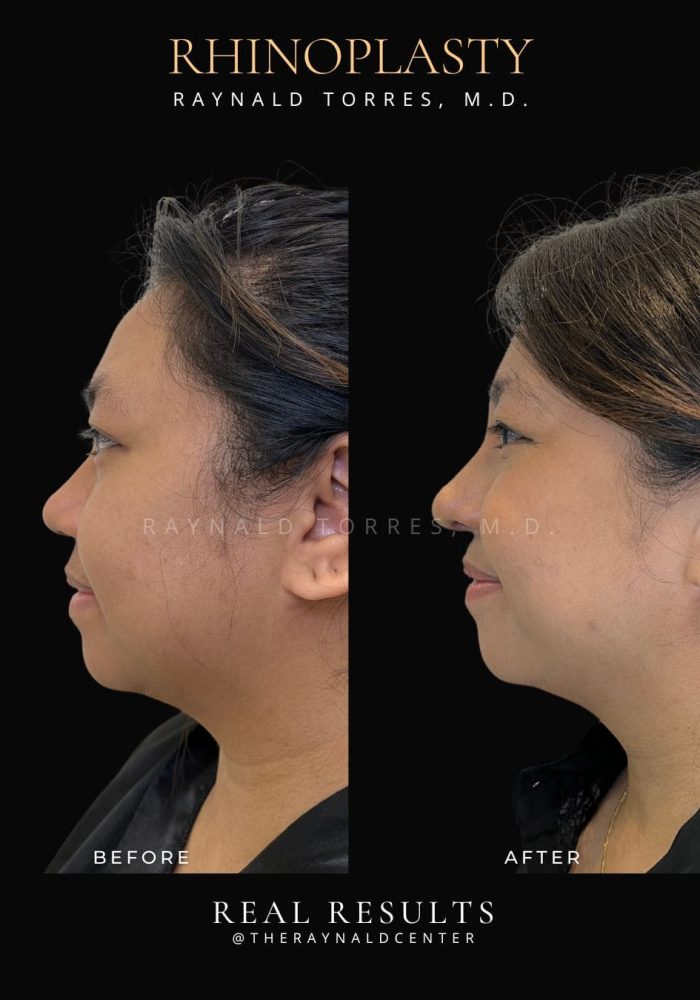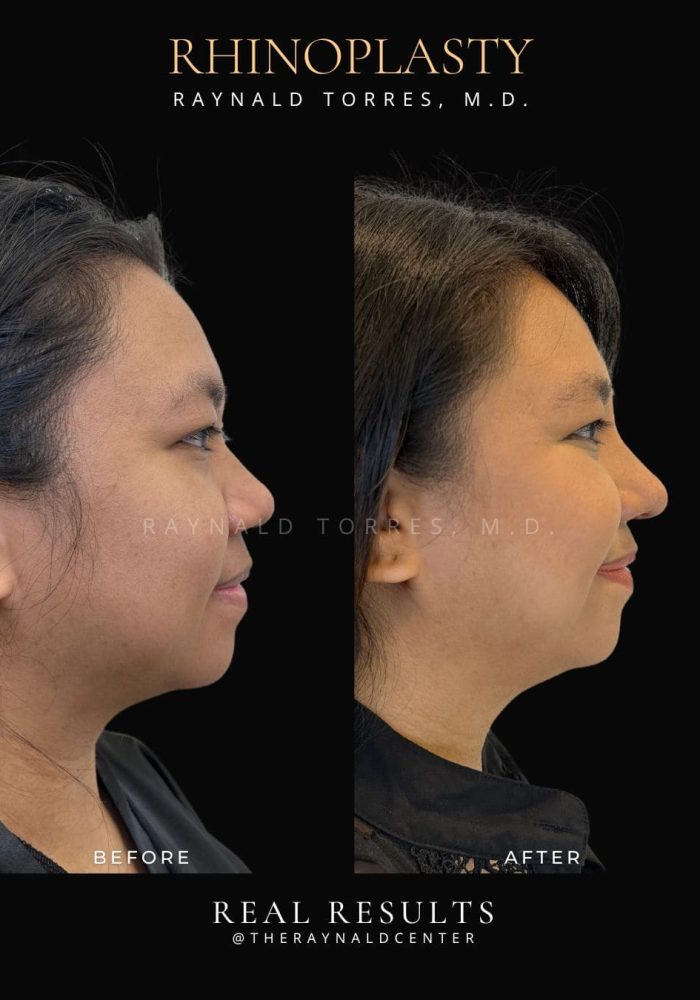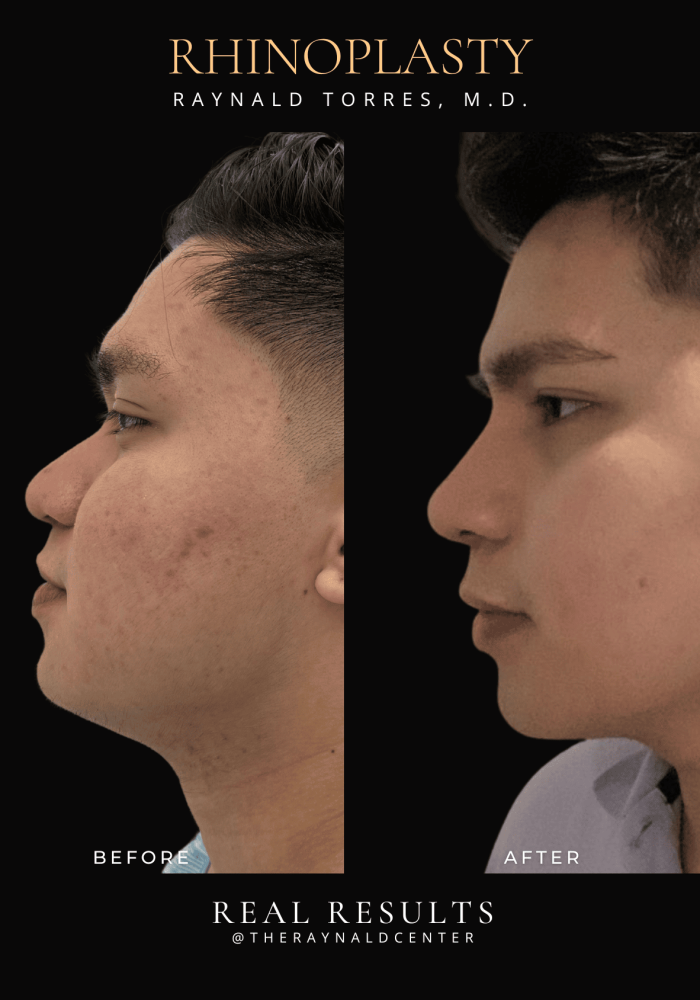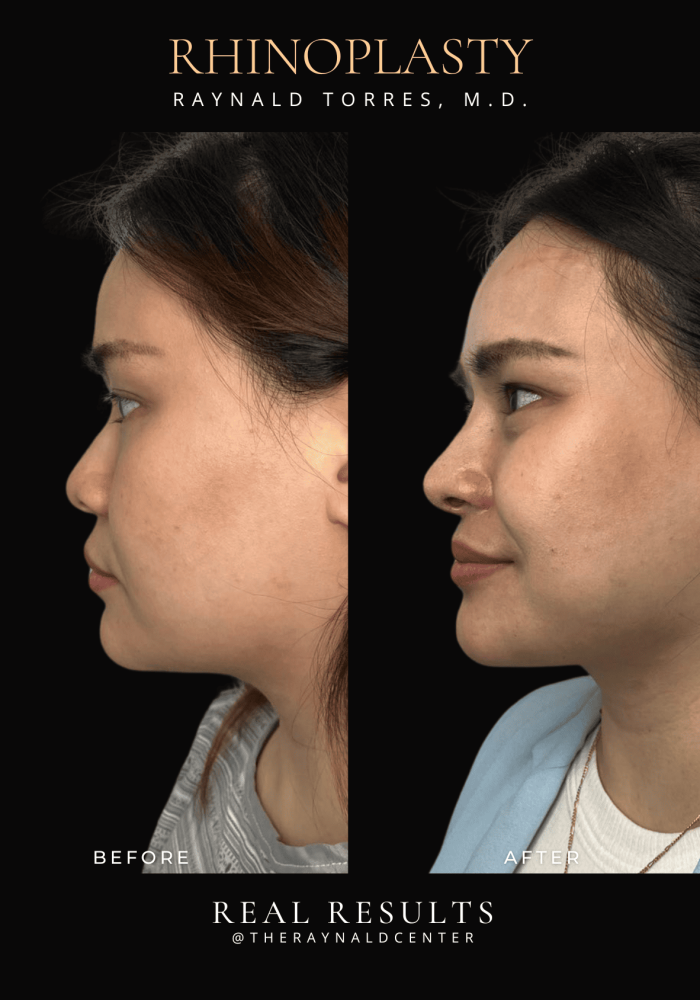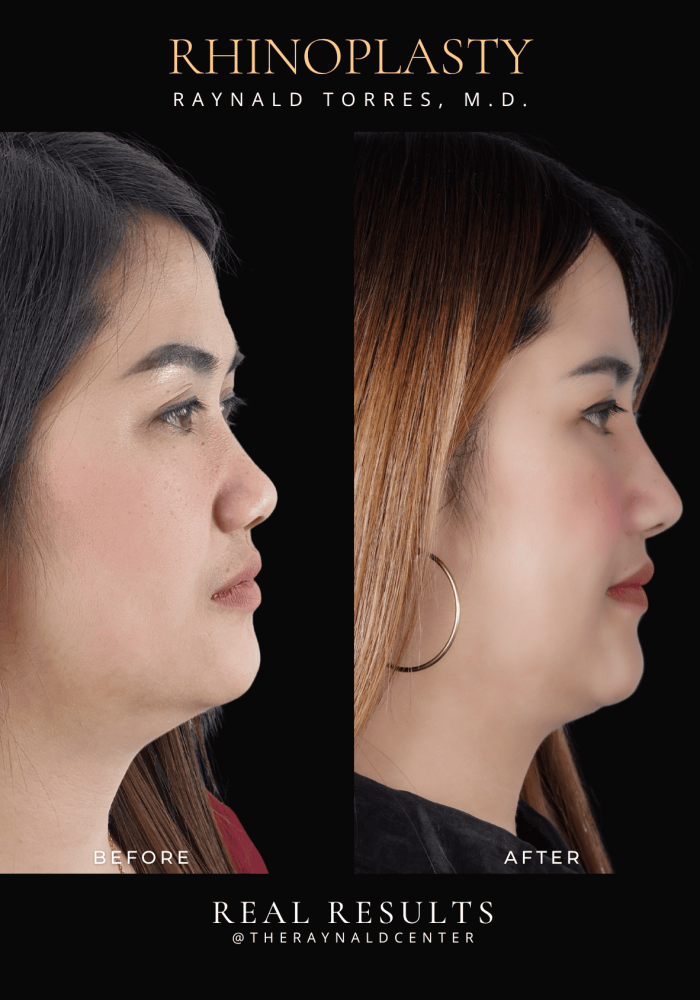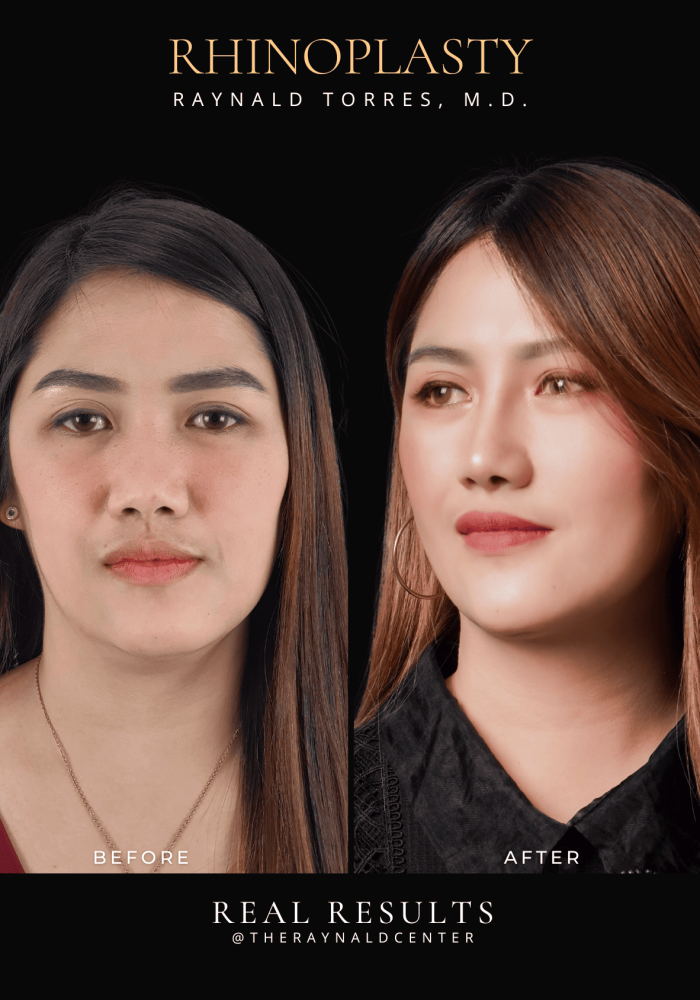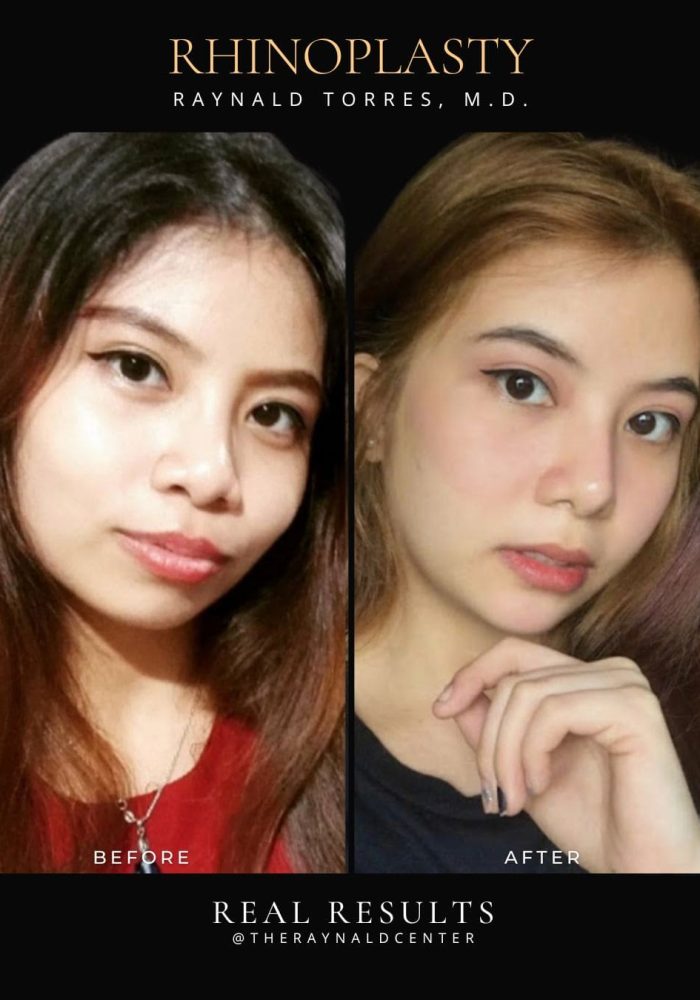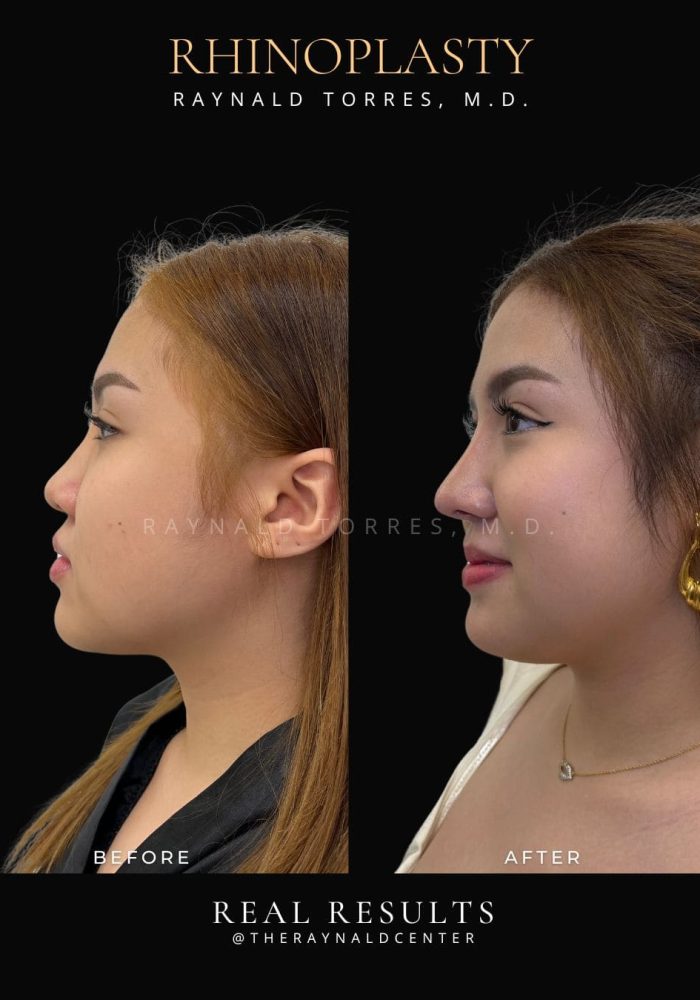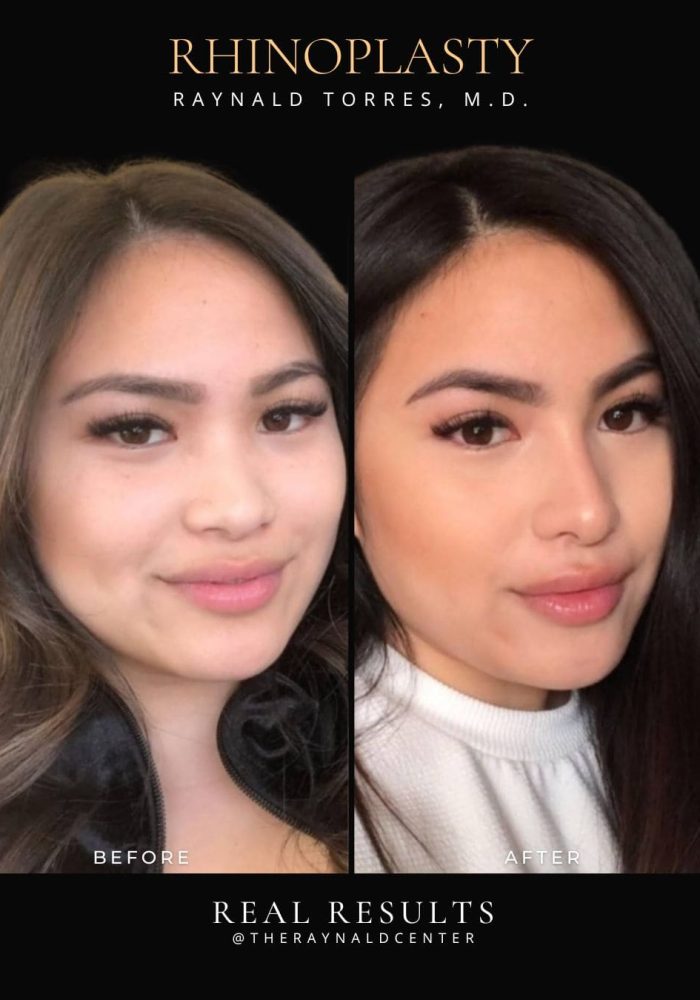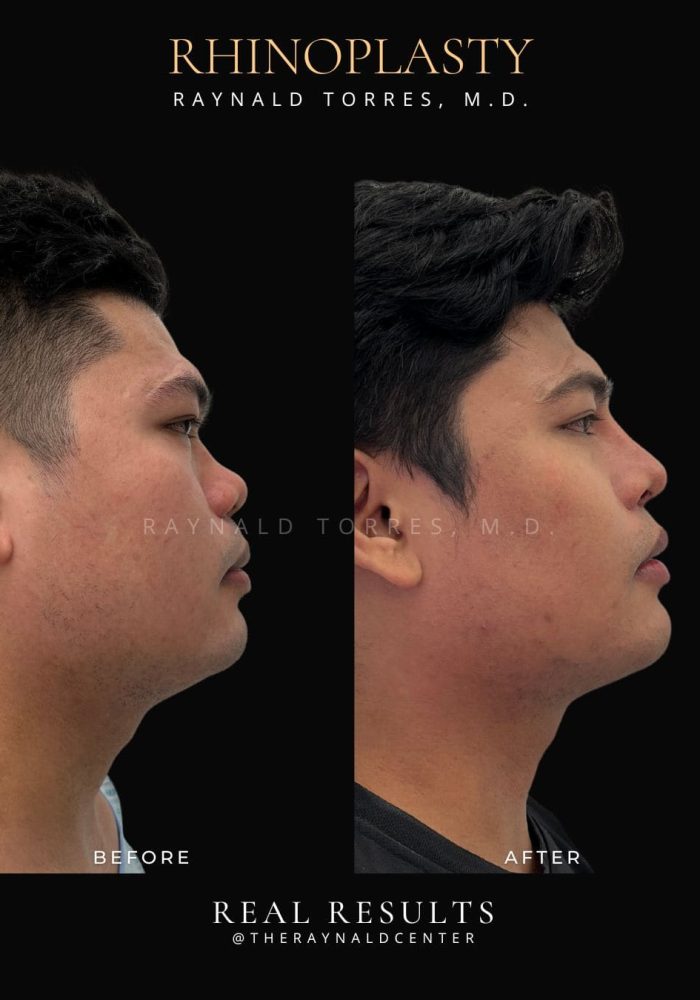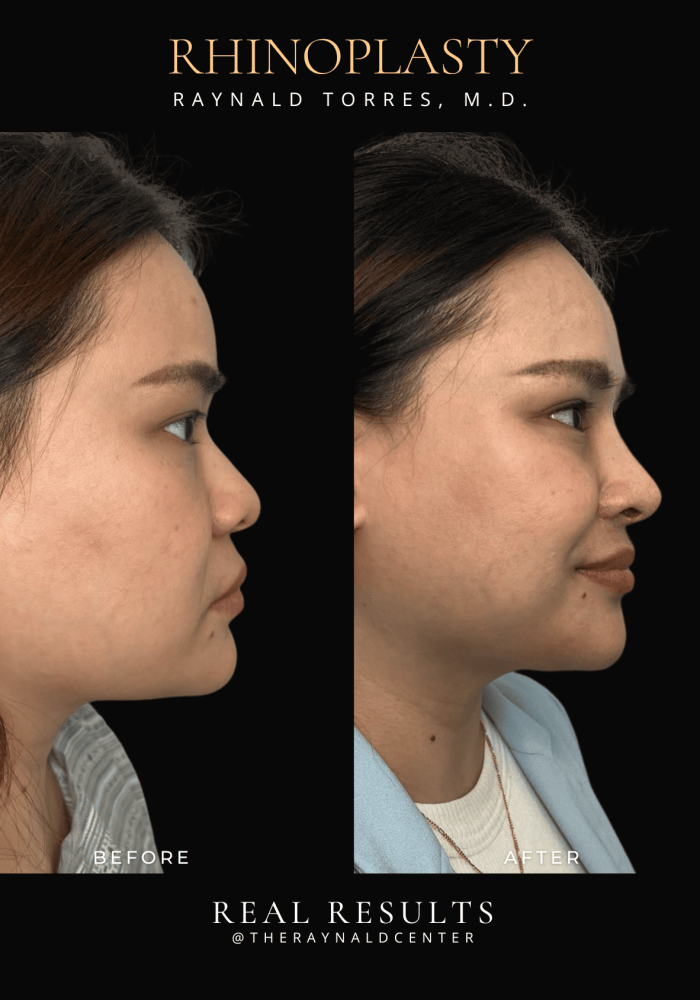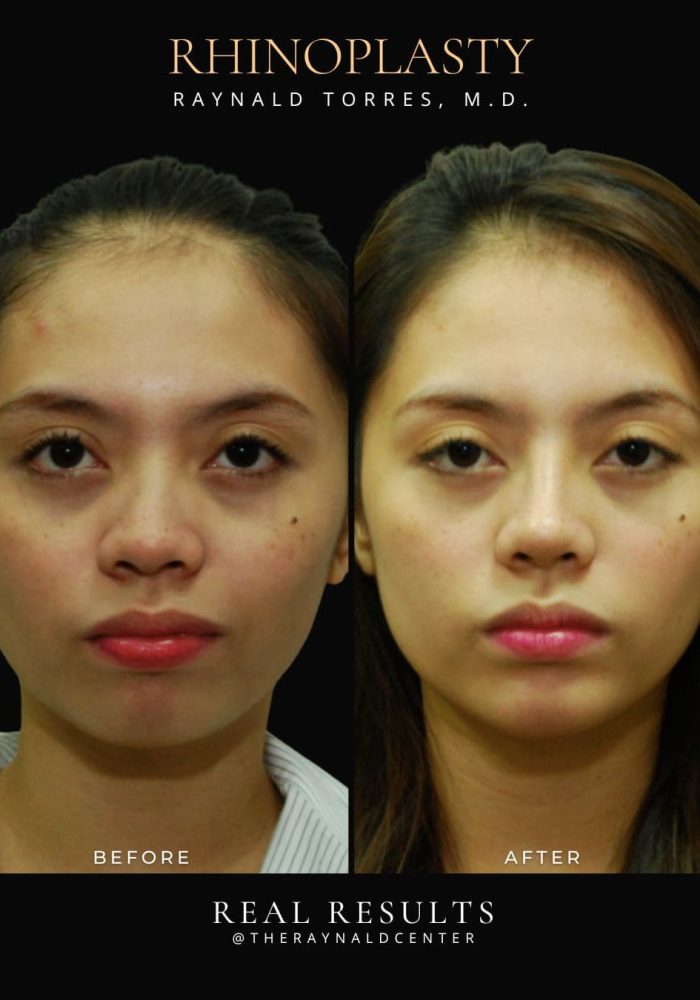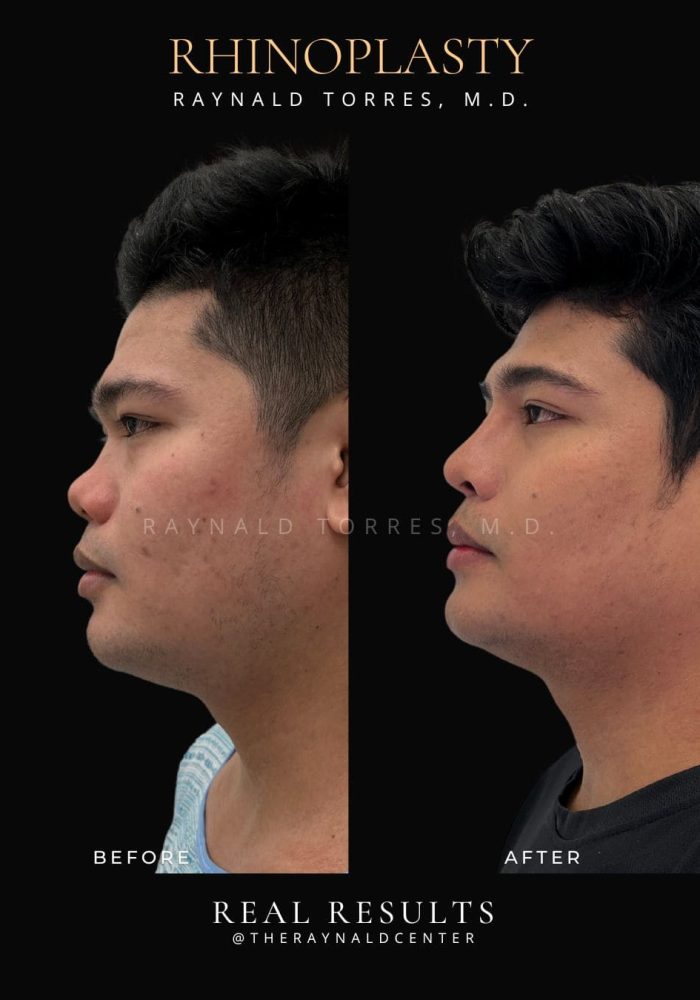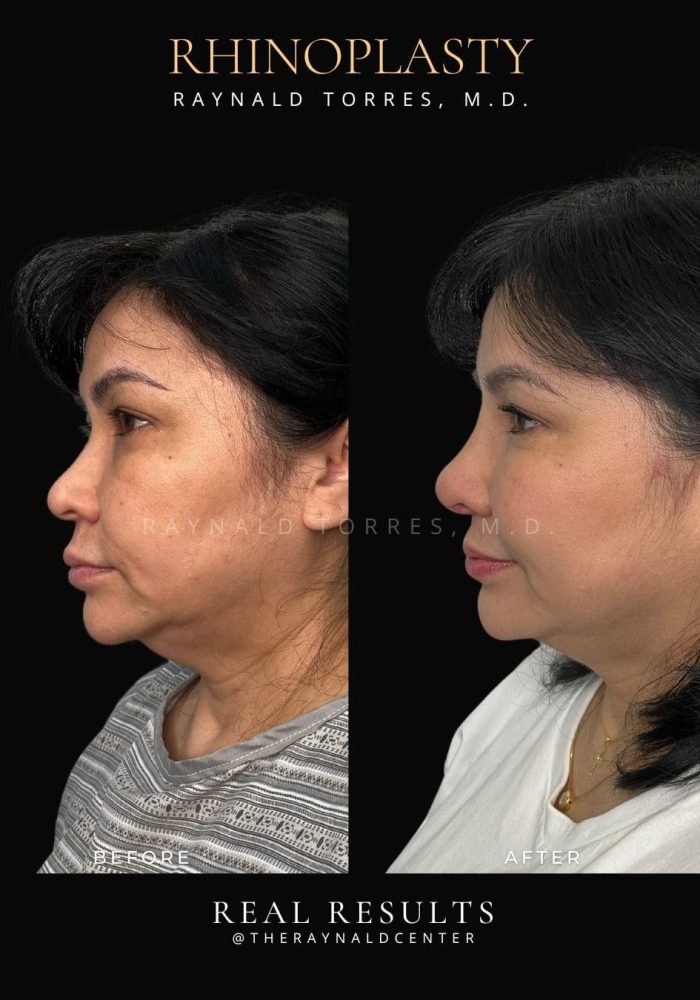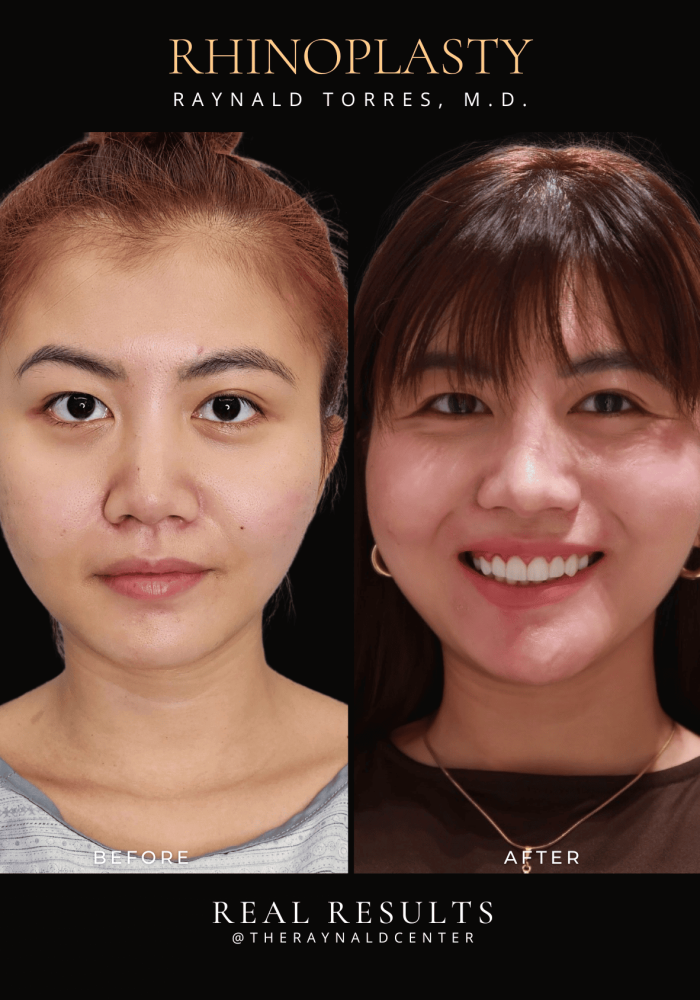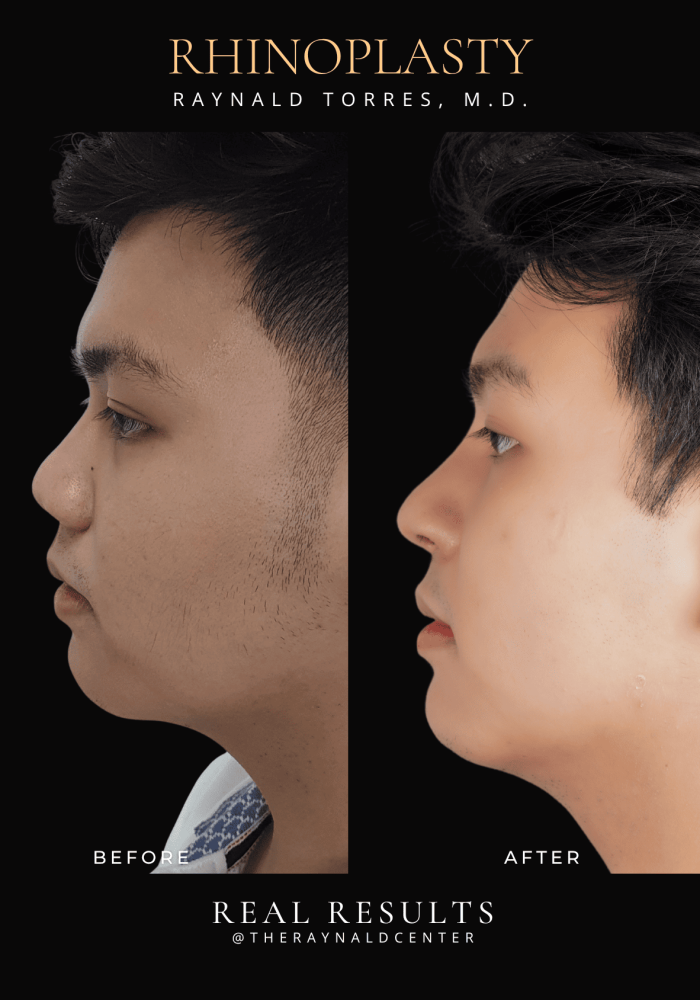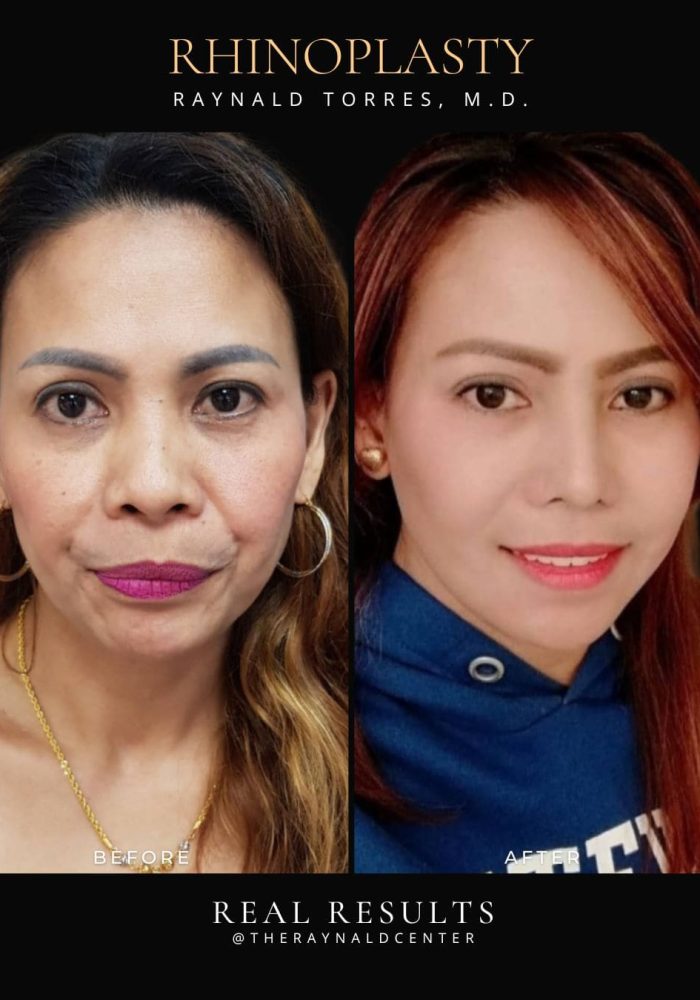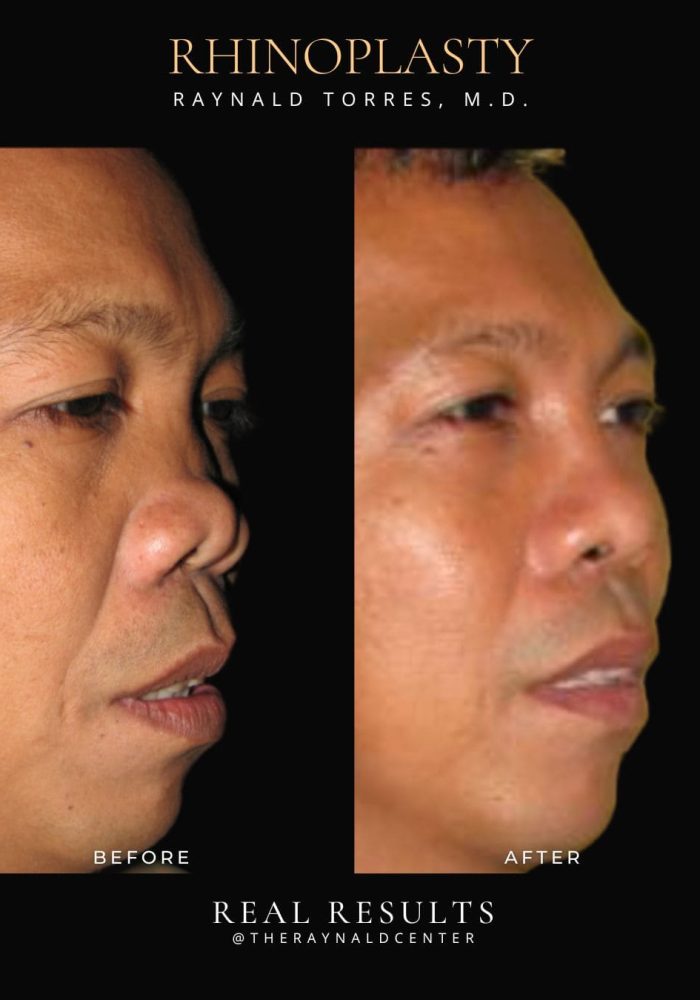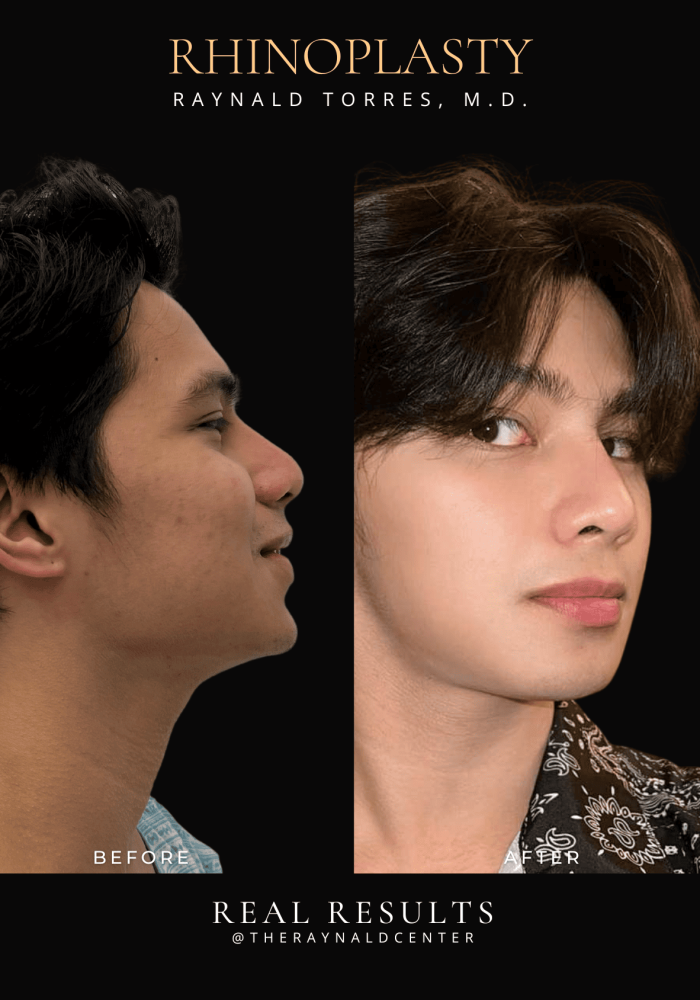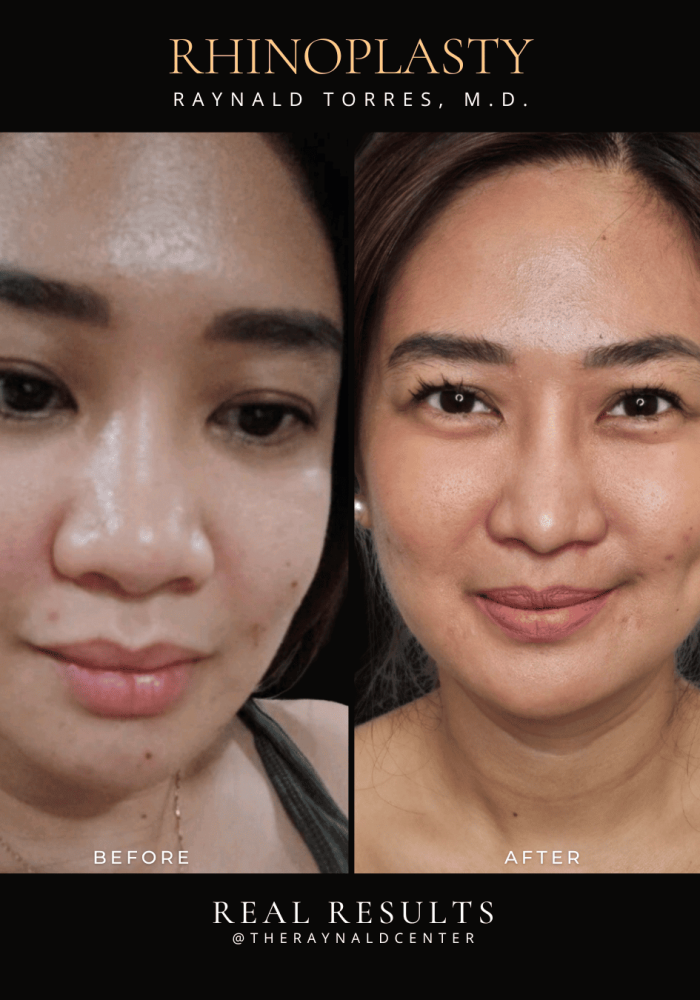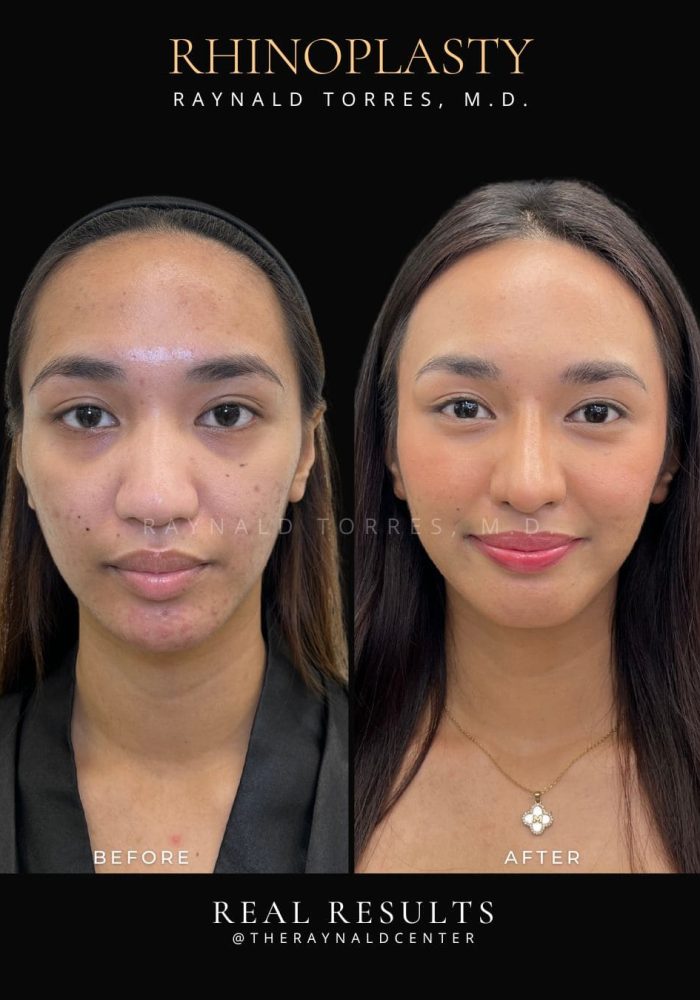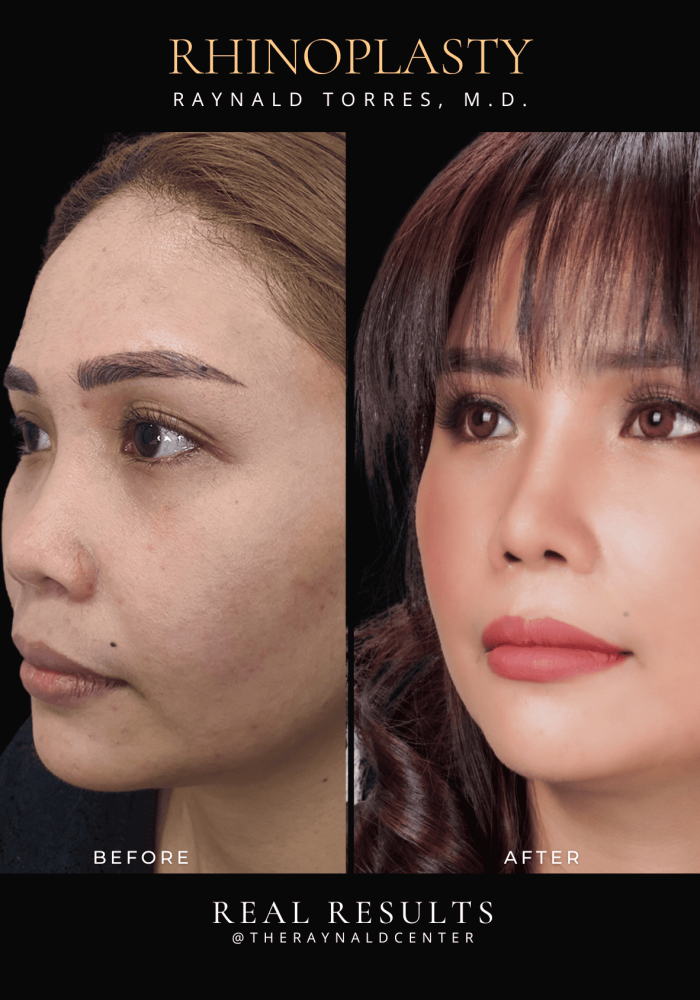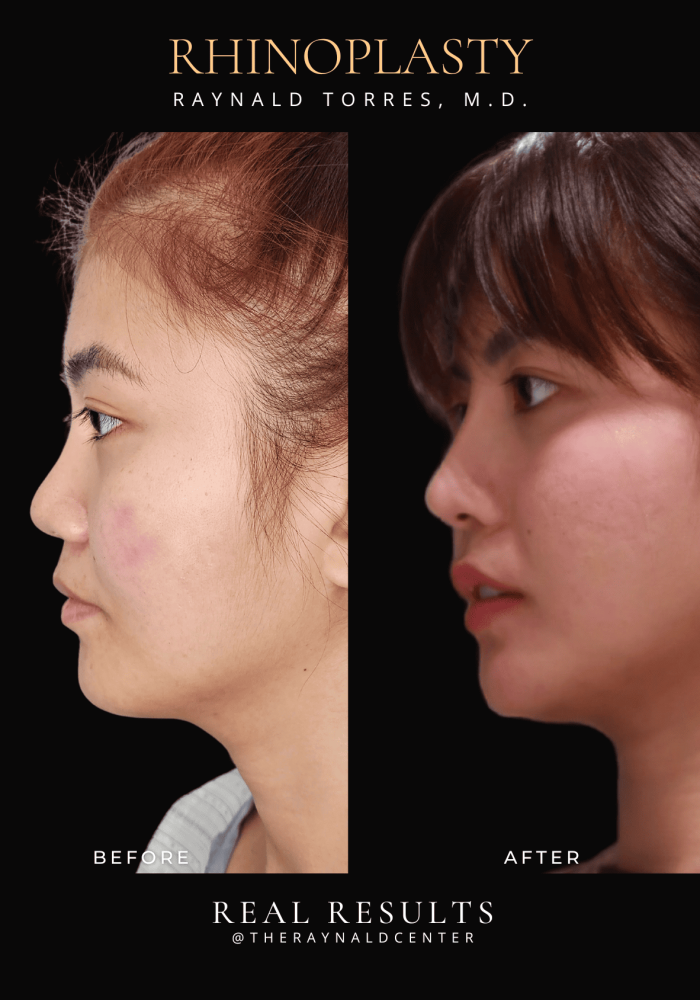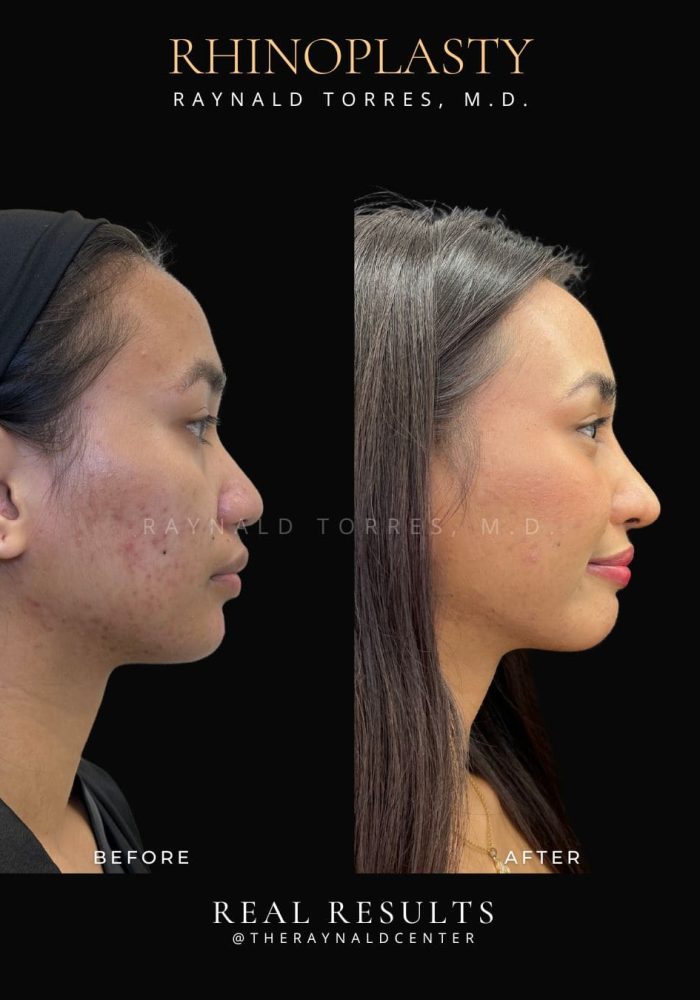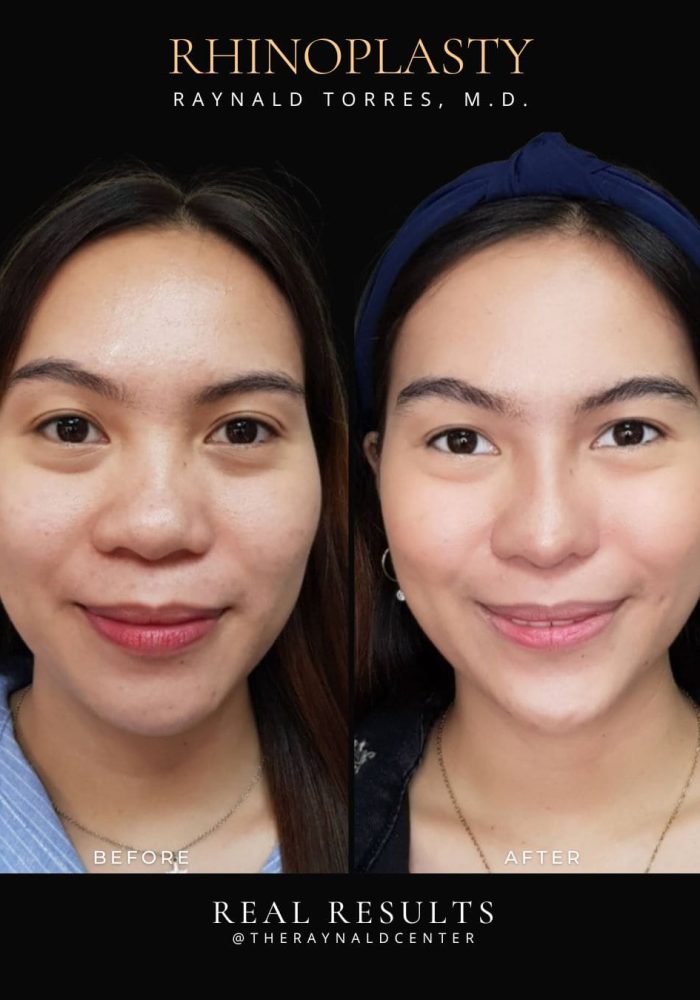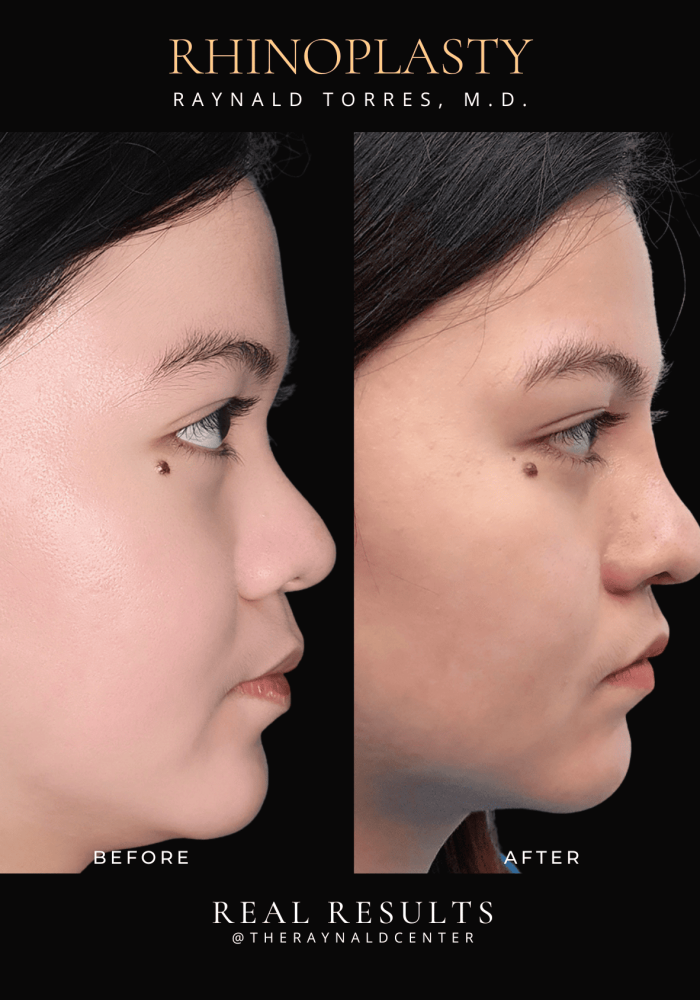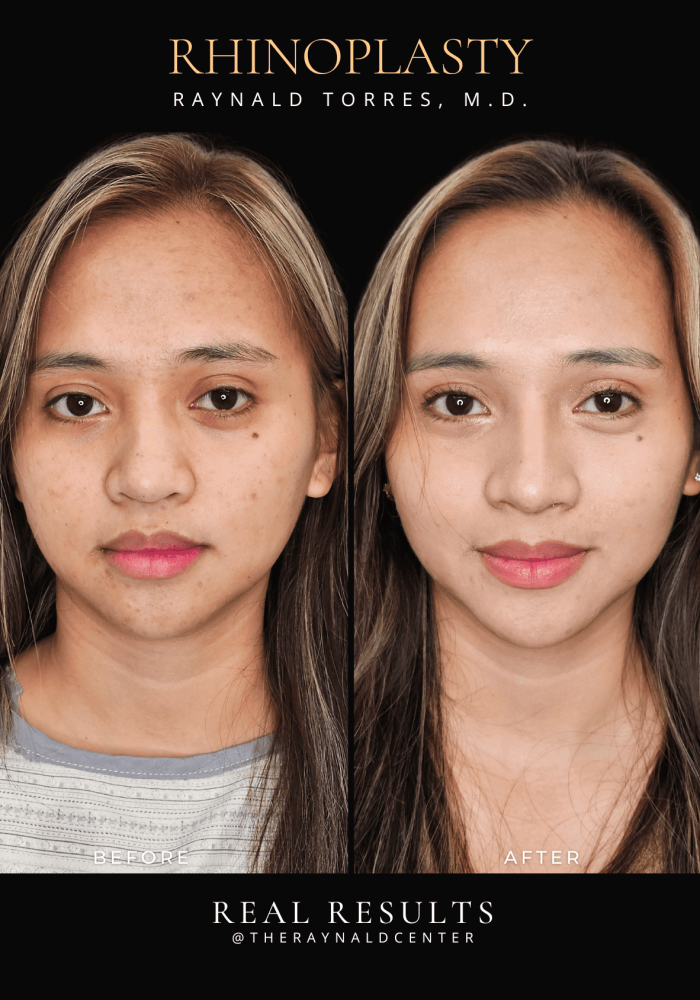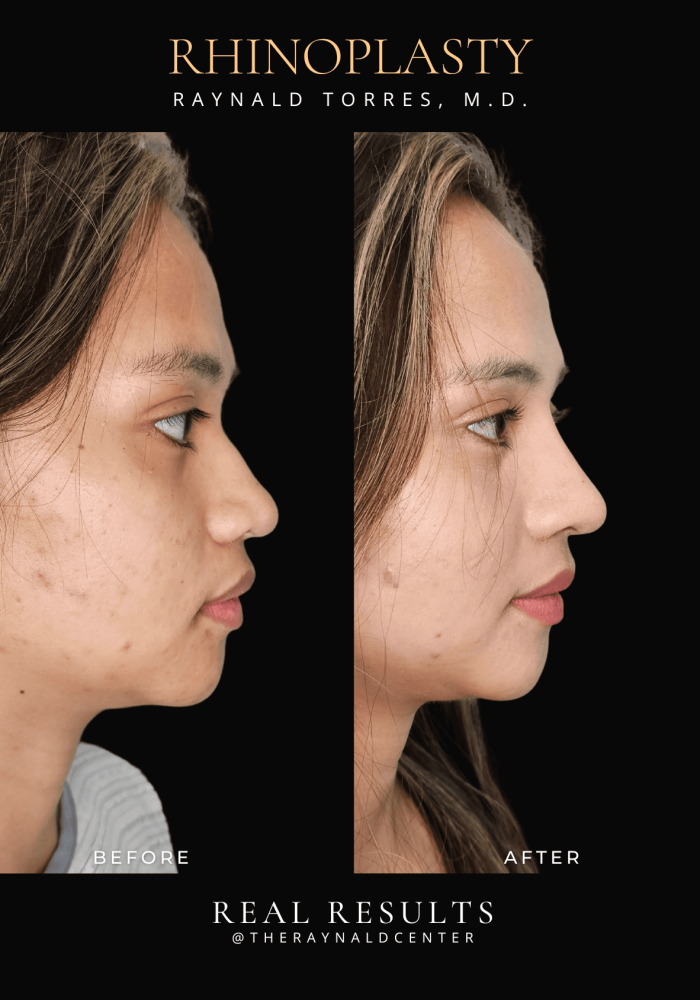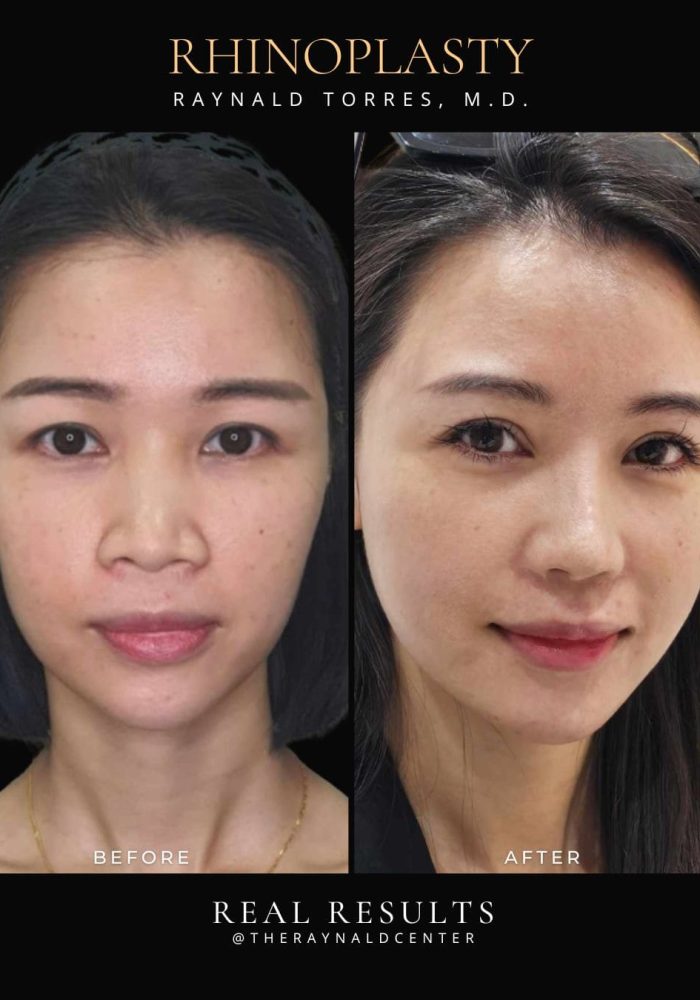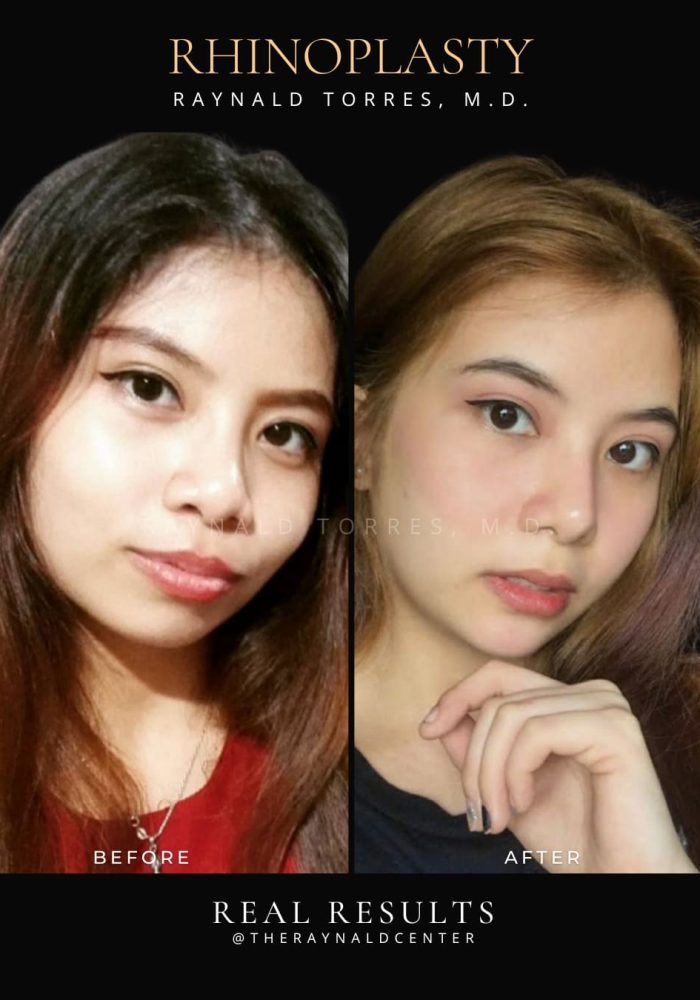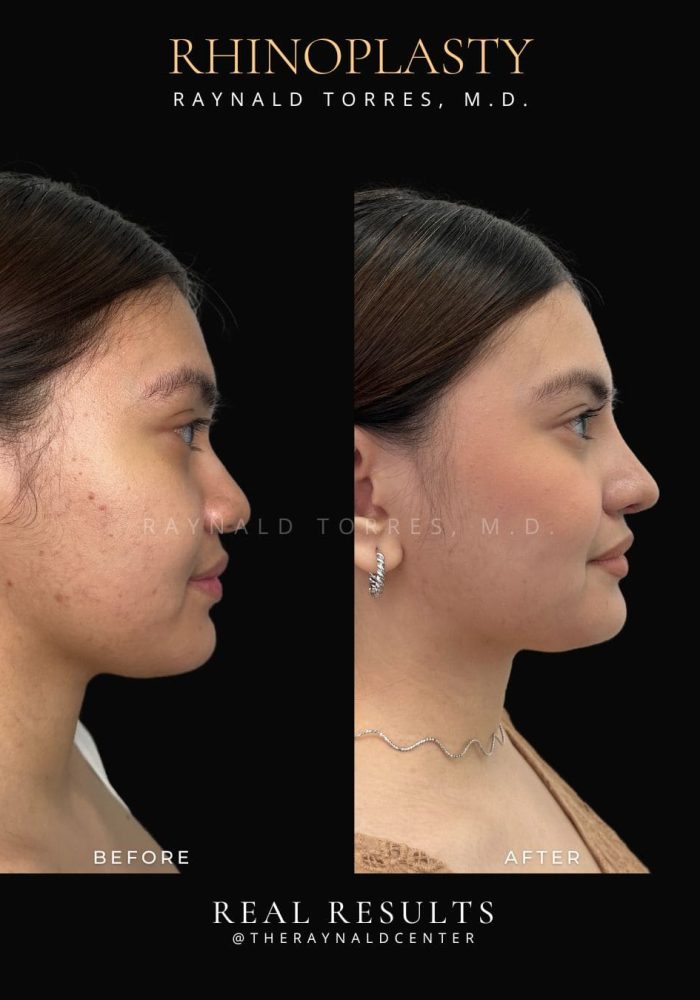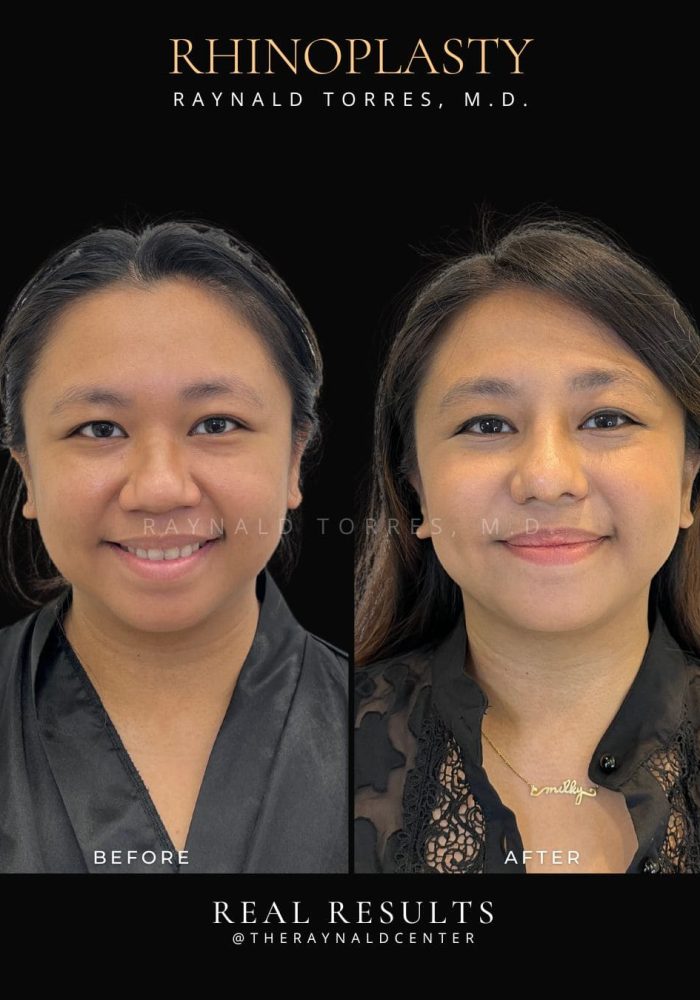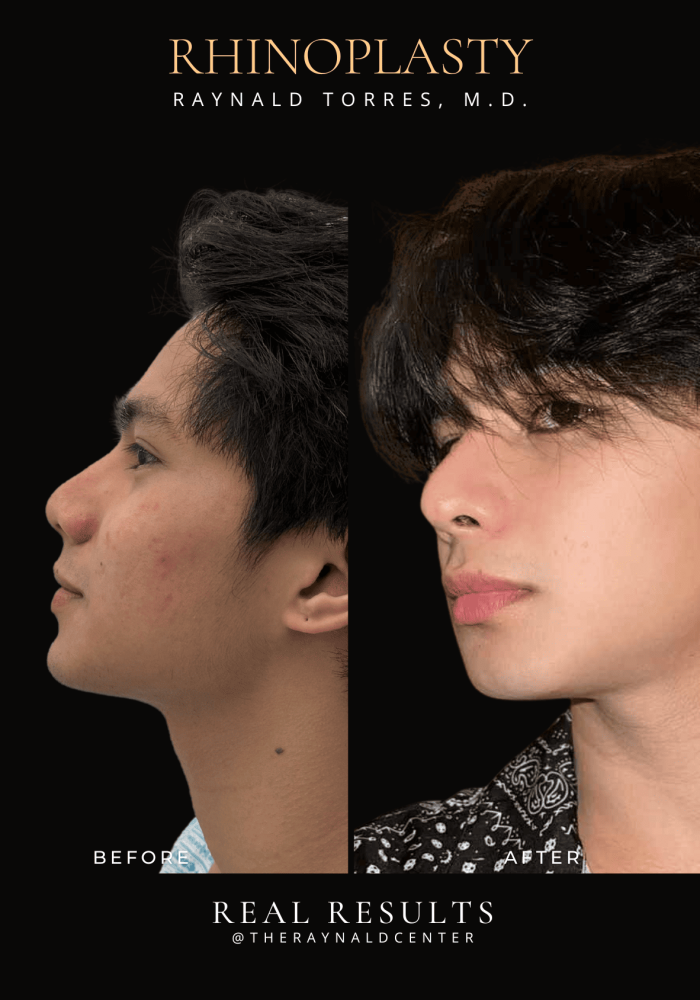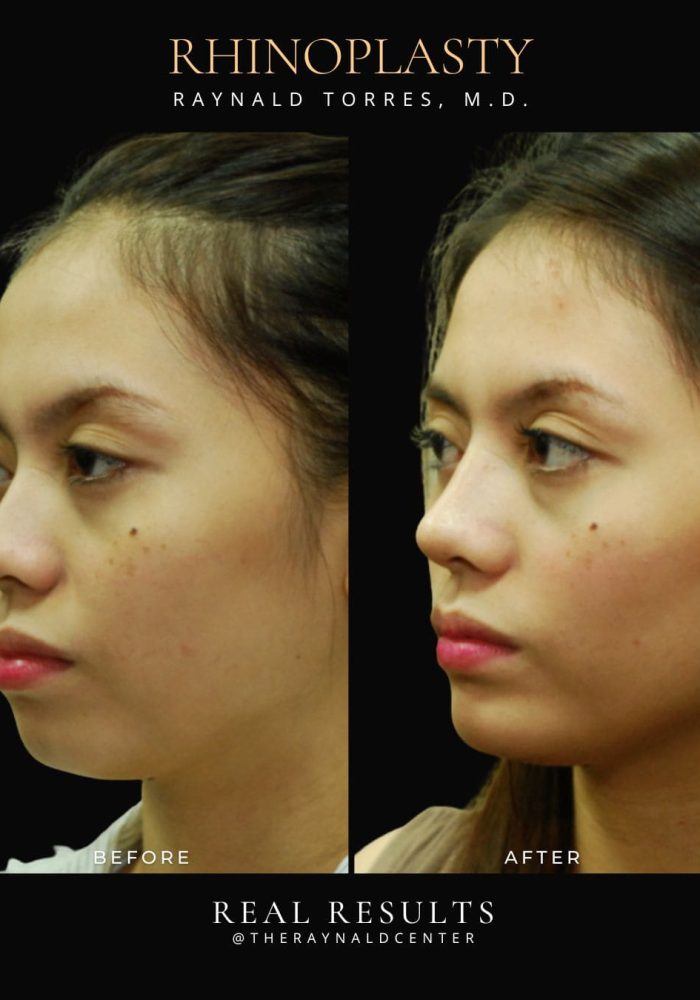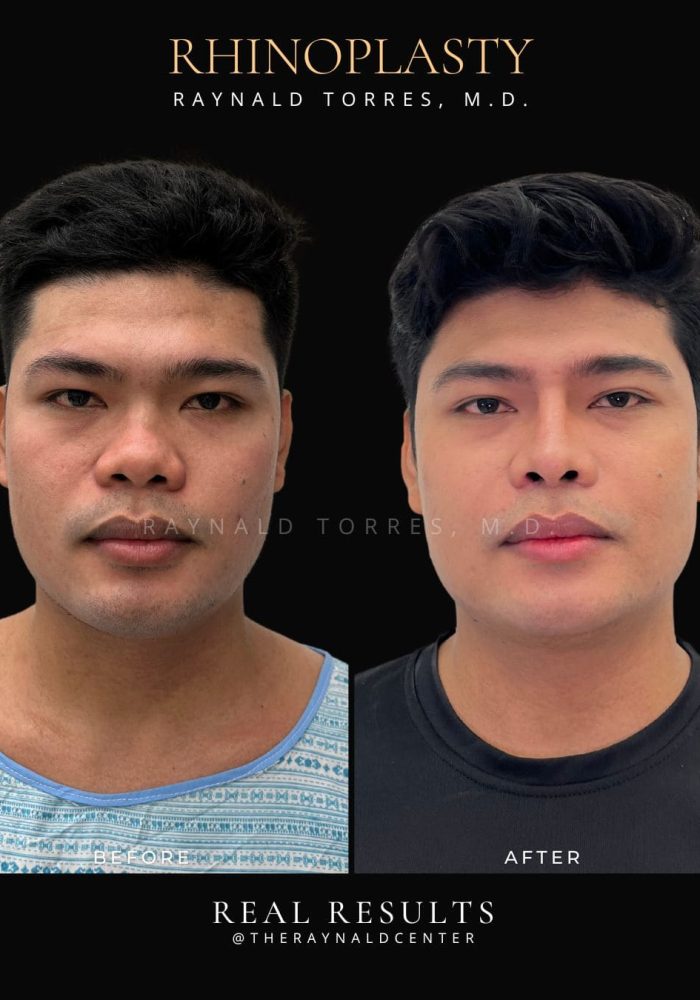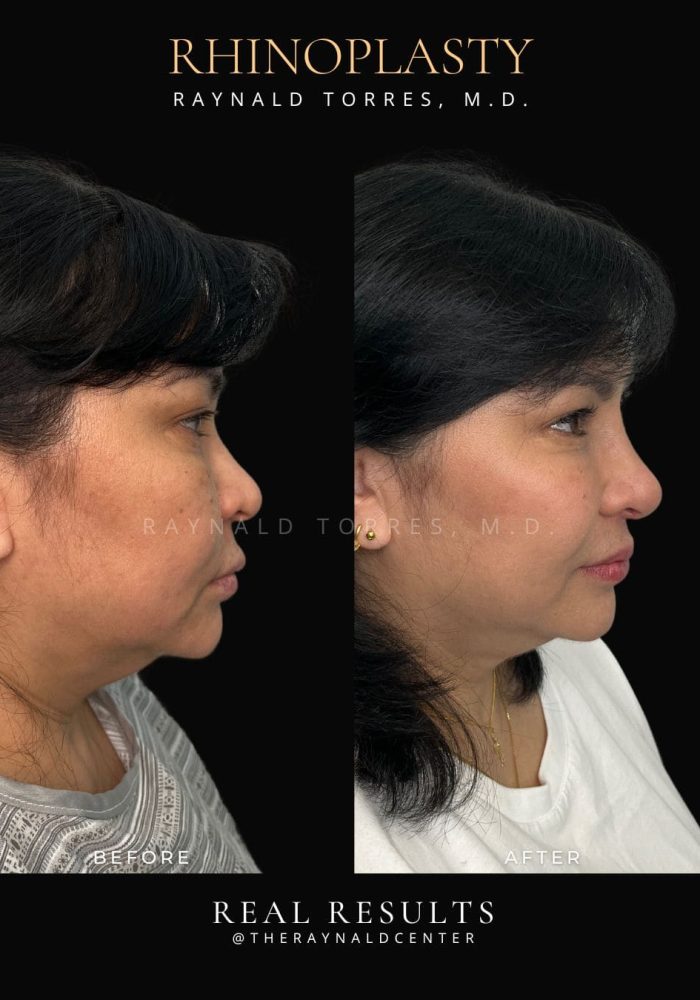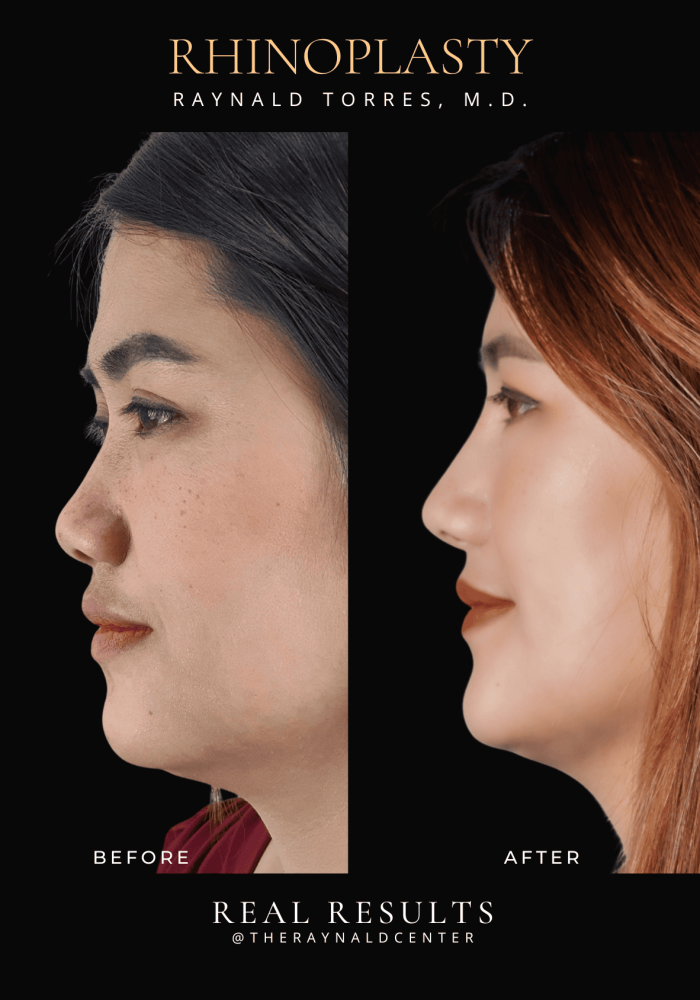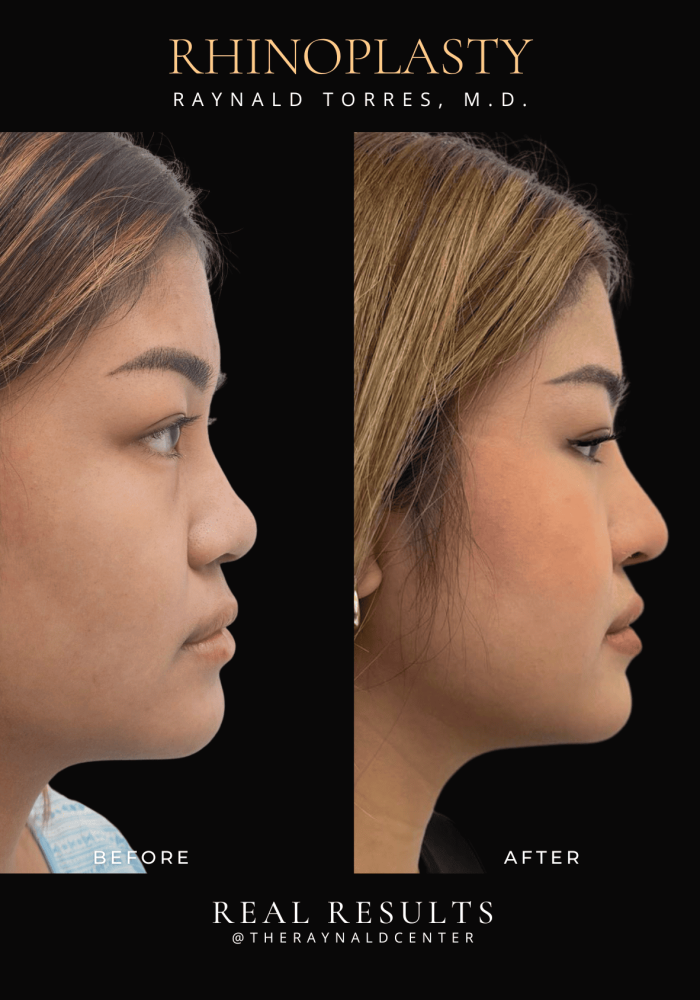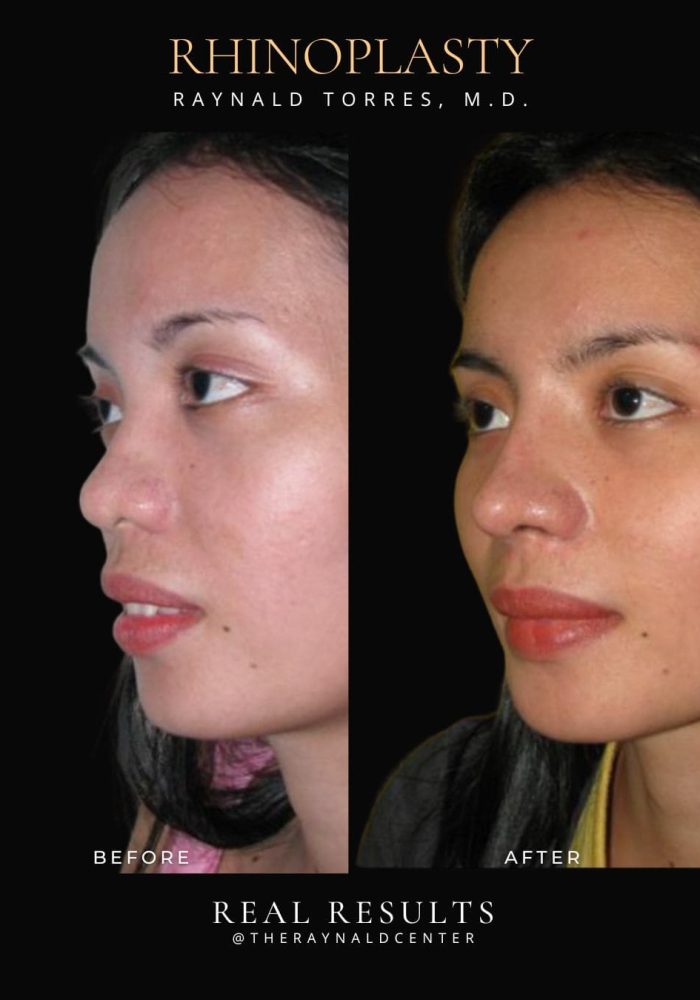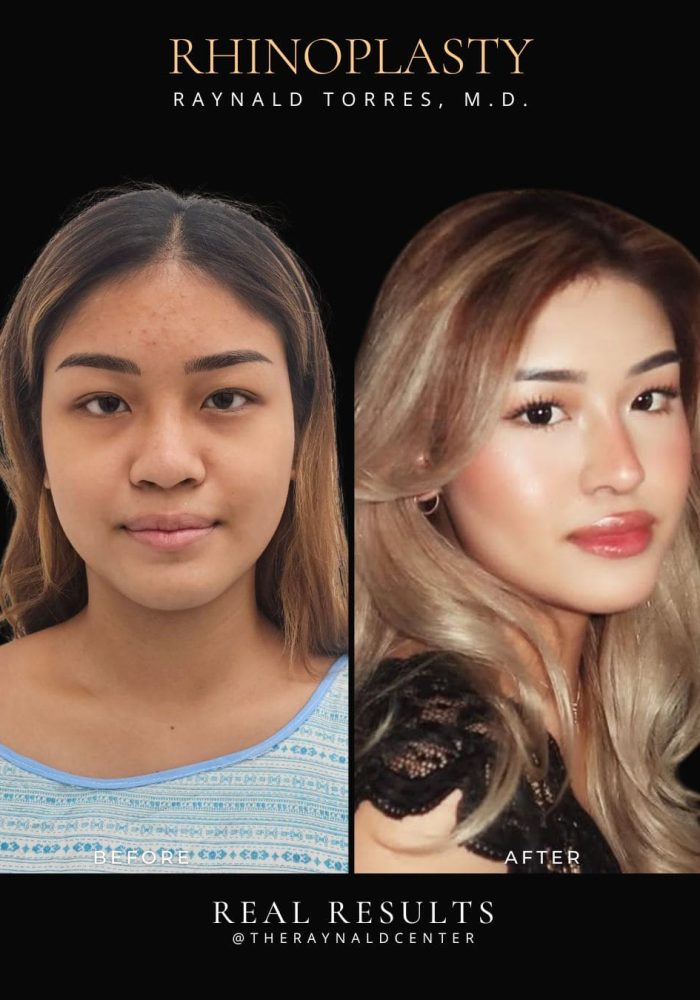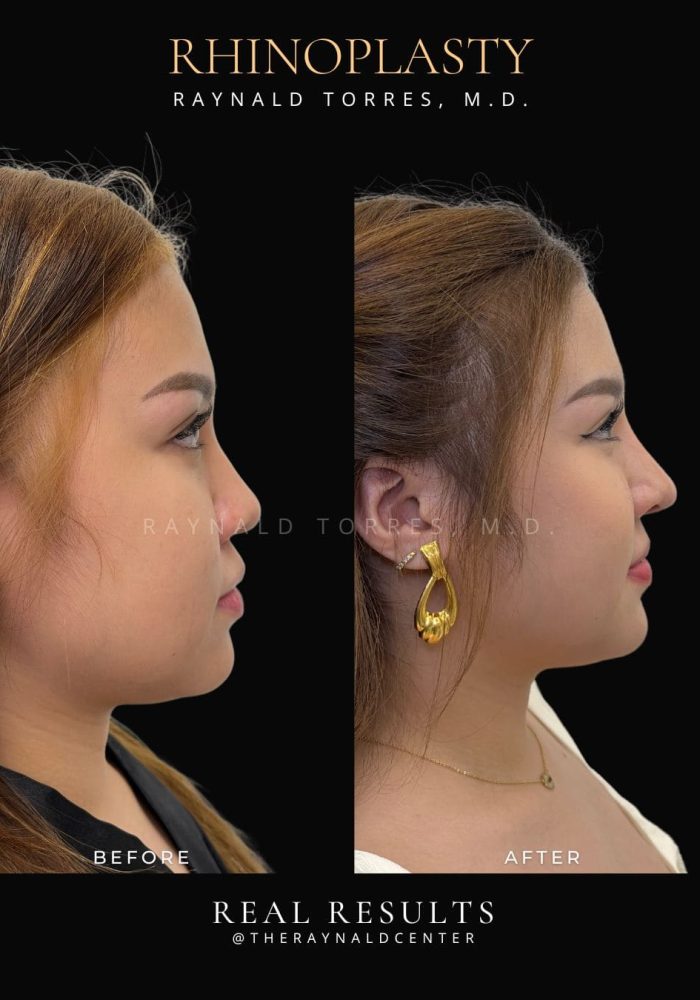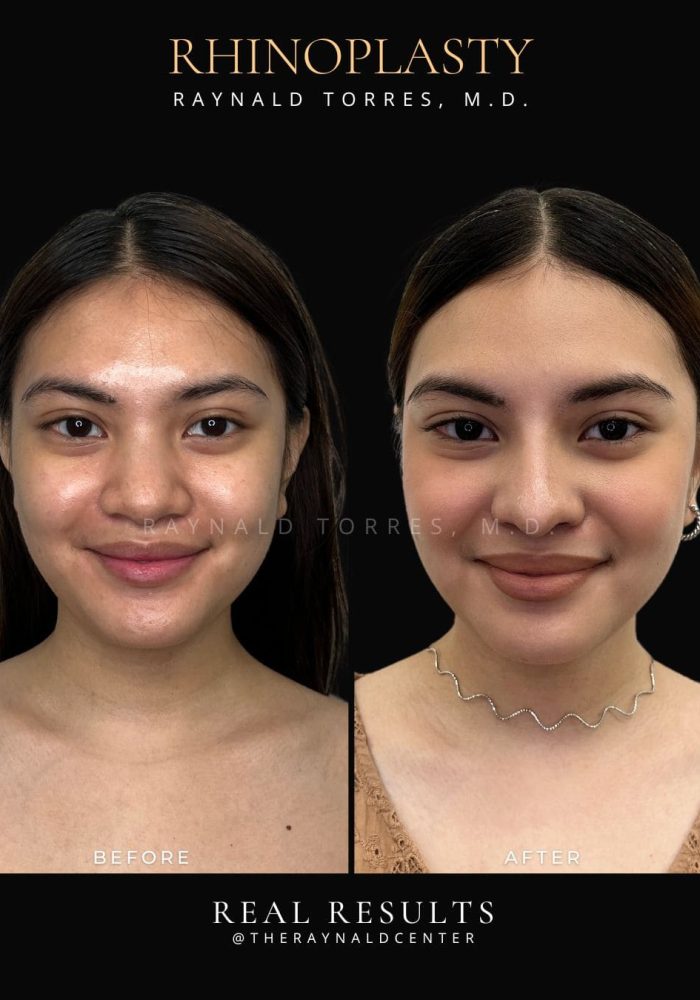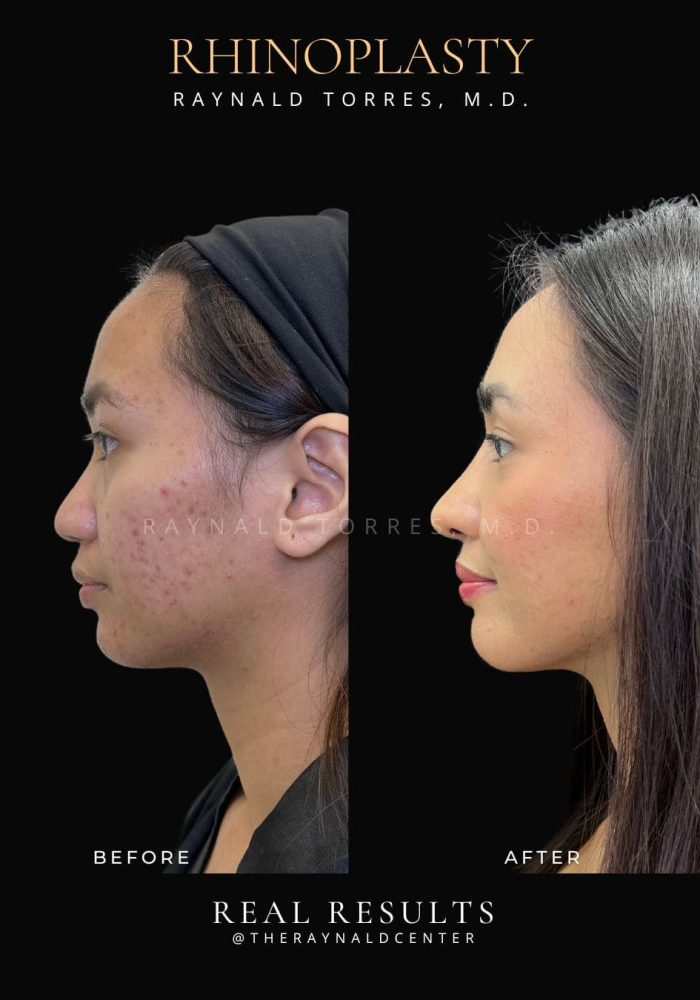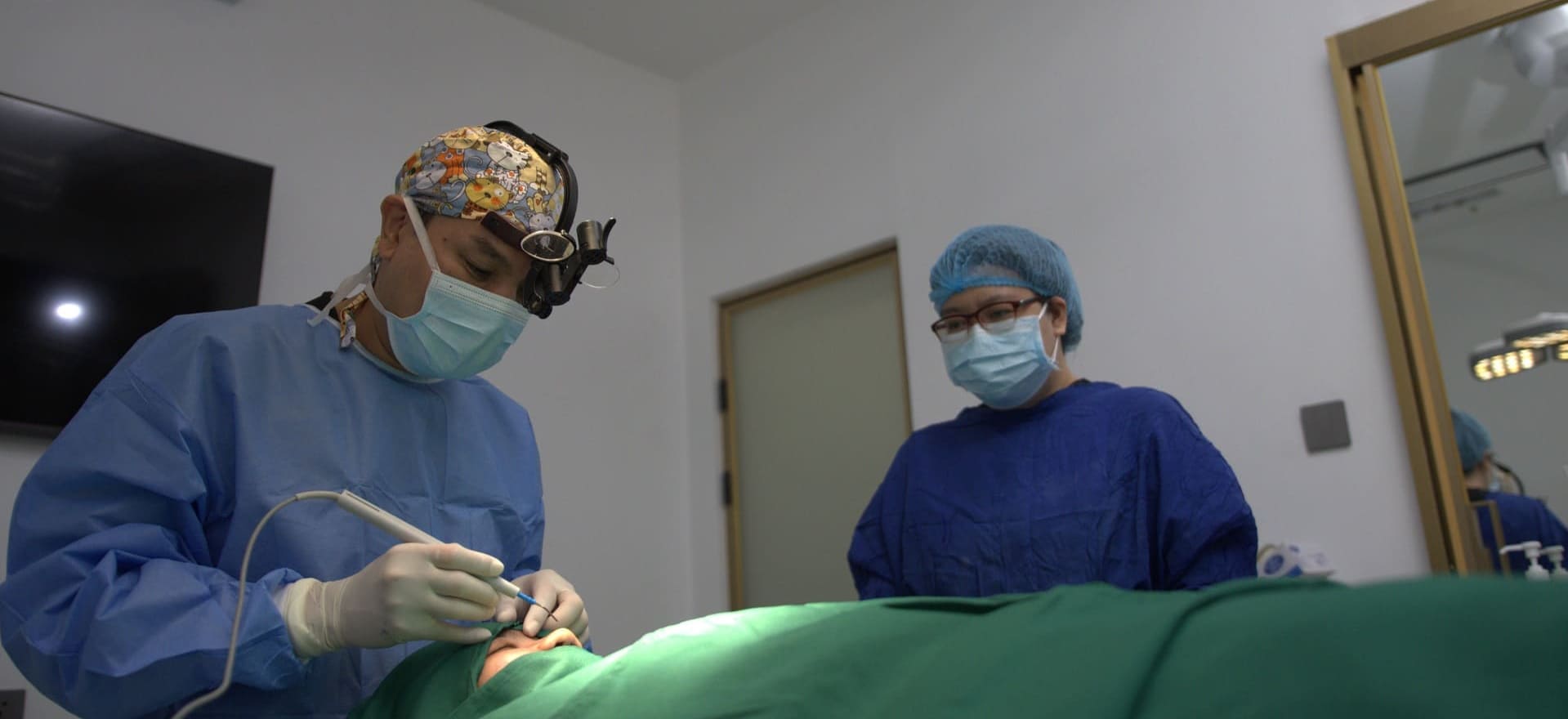
Asian Rhinoplasty / Nose Lift
BEFORE AND AFTER
videos
What is asian rhinoplasty?
Asian rhinoplasty is a specialized approach to nose reshaping that respects and enhances the unique characteristics of the Asian nose. Unlike Western rhinoplasty, which often focuses on reduction, Asian rhinoplasty typically involves structural enhancement and reshaping to achieve a natural, harmonious balance with other facial features.
Common features of the Asian nose include a low and broad nasal bridge, a short nasal length, thick skin, and a distinctive alar overhang—where the outer edges of the nostrils droop below the level of the columella (the strip of tissue between the nostrils). These traits can make standard rhinoplasty techniques less effective, which is why a customized approach is essential.
To address the low nasal bridge, augmentation rhinoplasty is often performed using biocompatible implants preferrably Goretex combined with cartilage grafts to create a more defined and elevated profile. These grafgts are well accepted by the body and will last your lifetime. For patients with alar overhang, a procedure known as alarplasty with alar lift is used to carefully remove excess tissue and reshape the nostrils. This not only refines the nostril shape but also increases columellar show, contributing to a more aesthetically balanced result.
Asian skin tends to be more prone to hypertrophic scarring, which is why I strategically place incisions inside the nostrils where they are completely hidden from view. This scarless technique ensures that patients have no visible signs of surgery.
At our clinic, we specialize in ethnic rhinoplasty techniques that enhance your features while maintaining cultural authenticity and personal identity. Our goal is always to create natural-looking results that suit each individual face—not a one-size-fits-all solution.
Whether you’re seeking subtle refinement or a more defined nasal contour, our tailored approach to Asian rhinoplasty ensures results that look elegant, proportional, and uniquely you.
Pre-Procedure Guidelines
Medical Evaluation and History
Complete any required blood tests, imaging studies, or consultations as directed by your surgeon.
Provide a full list of medications, vitamins, and supplements you are taking.
Medications and Supplements
Discontinue blood-thinning agents (e.g., aspirin, ibuprofen, certain herbal supplements) at least 10 days before surgery, unless otherwise instructed.
Continue any essential prescription medications with a small sip of water on the morning of surgery.
Smoking and Alcohol
Stop smoking at least 4 weeks prior to your procedure to promote optimal healing.
Avoid alcohol for 48 hours before surgery.
Fasting and Hydration
Do not eat or drink after midnight the night before surgery, unless your surgeon advises otherwise.
Stay well-hydrated in the days leading up to your operation.
Logistics and Support
Arrange for someone to drive you home and stay with you for the first 24 hours post-procedure.
Prepare a comfortable recovery area at home with pillows to support your head and easy access to medications and supplies.
Personal Preparations
Wear loose, front-opening clothing on the day of surgery.
Leave jewelry, contact lenses, and makeup at home.
Post Procedure Guidelines
Please follow these instructions carefully after your surgery to support healing and ensure the best outcome:
Swelling & Bruising
Mild to moderate swelling and bruising around the nose and face are normal and will begin to subside within 2–3 days.
Ear dressings, if used, may be removed after 24 hours unless instructed otherwise.
Activity Restrictions
For 2 weeks, avoid bending over, lifting heavy objects, or any strenuous physical activity that may increase nasal pressure.
No contact sports or activities with risk of impact for 3 months, unless cleared by your surgeon.
No swimming for 6 months, unless specified otherwise.
Do not wear glasses or sunglasses that rest on the nose for 3 months.
Cold & Warm Compress
Apply an ice-cold compress to the cheeks and eyes (not directly on the nose) for the first 48 hours to minimize bruising and swelling.
After 48 hours, switch to a warm compress to help reduce any remaining swelling.
Use the warm compress for 20 to 30 minutes, 3 times daily or more frequently as needed.
Hygiene & Sun Protection
You may take a sponge bath and have your hair washed salon-style to avoid wetting the nose area.
Gently clean incision areas using distilled water and cotton buds, then keep them dry.
Avoid direct sun exposure on the nose for 6 weeks to prevent hyperpigmentation and delayed healing.
Medications & Healing
Take all prescribed medications exactly as directed.
Complete your antibiotic course within 7 days.
Continue any maintenance medications unless instructed otherwise.
Do not self-medicate or take over-the-counter supplements without consulting your surgeon.
Avoid alcohol for at least 48 hours while on pain medication.
Refrain from smoking, as it significantly delays healing and increases the risk of complications.
Infection Prevention & Warning Signs
Watch for the following signs of infection and contact us immediately if any occur:
Abnormal discharge (pus, foul odor, thick bloody, yellow, or green fluid)
Redness, swelling, or warmth around the nose or face
Persistent pain, fever, or chills

